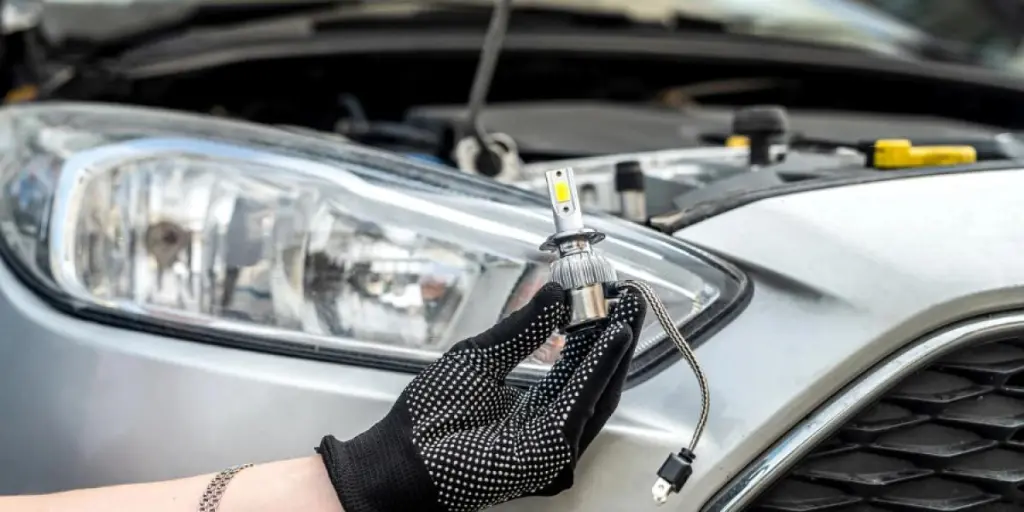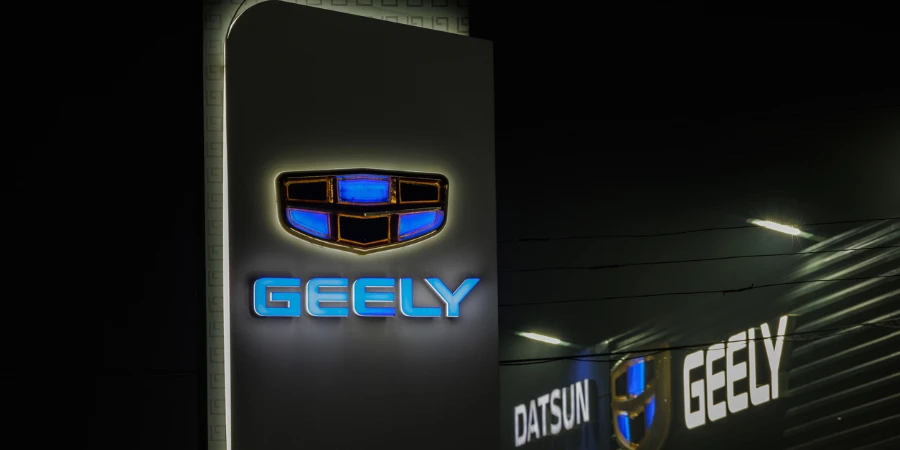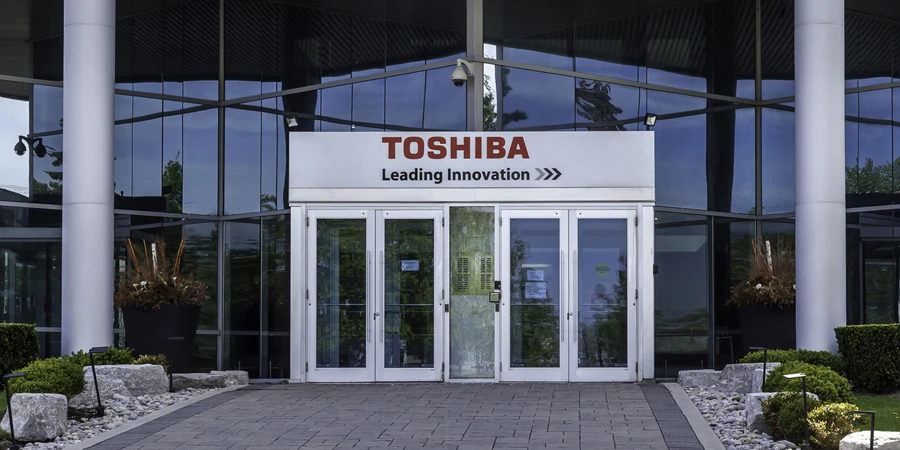The market is flooded with various types of LED headlight bulbs, each with its own set of features and distinctions. Given the wide range of options, consumers frequently need clarification when deciding on the best H7 LED bulb for their vehicle.
Furthermore, picking the wrong type of bulb and installing it in the incorrect base can be disastrous. Read on to learn everything about LED headlight bulbs, specifically H7 bulbs.
Table of Contents
Overview of the LED headlight bulb market
How are bulbs classified?
Car headlight bulbs explained
How are H7 LED bulbs different from halogen bulbs?
4 factors to consider when choosing H7 LED bulbs
To sum up
Overview of the LED headlight bulb market
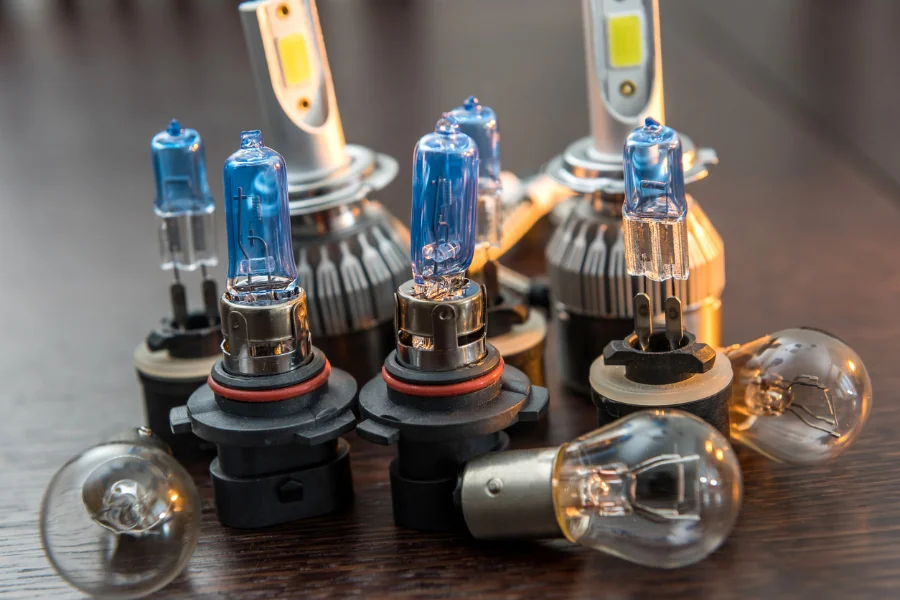
The growth of electric and hybrid vehicles has boosted the global LED headlight market over the last five years. The growing demand for advanced headlights and government regulations in line with environmental standards are also driving the LED bulb market. However, the high costs of LED headlights are hindering growth.
ZKW and Hella are the two most important European suppliers of LED headlights, while Lumax and Fiem Industries dominate the motorbike headlight market in India. Among the other market participants are Black Diamond, GRDE, VITCHELO, Yalumi Corporation, Shining Buddy, Nitecore, Princeton, and Energizer.
How are bulbs classified?
There are several classifications of car bulbs, and the United Nations has established international standards to ensure consistency across countries. The bulbs are divided into three groups, the first of which includes tail lights, headlights, and other accessories.
Signaling lights are included in Group 2, but not bulbs that illuminate the road. Lastly, group 3 includes lights that are no longer used on new vehicles but are used as replacements for older cars.
H1, H3, H4, H7, H11, HB3, and HB4 bulbs are included in Group 1. They are primarily used as headlights, and while they are classified as such, the bulbs are not interchangeable. For example, while H1 and H7 bulbs appear to have the same output, an H1 bulb will not fit into an H7 bulb socket.
Car headlight bulbs explained
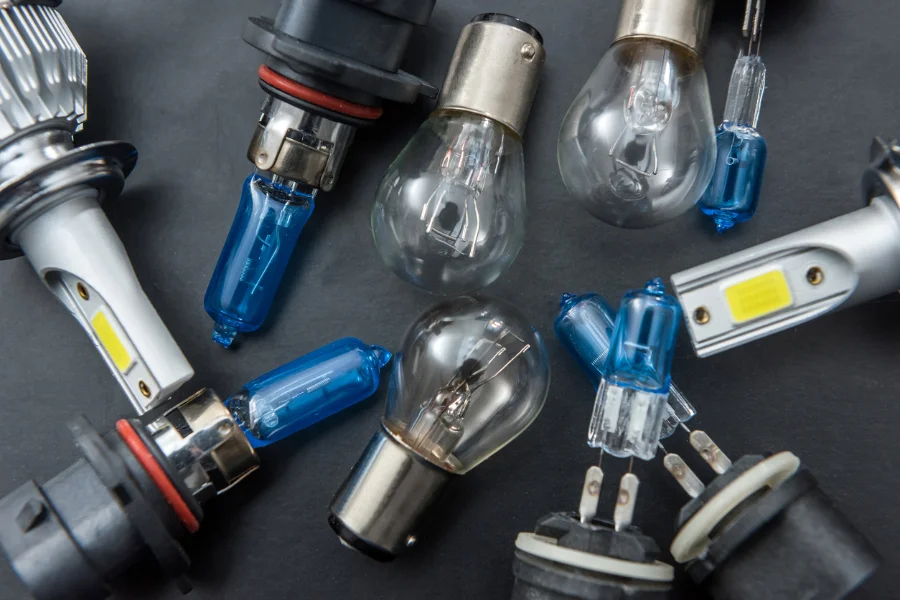
Headlight bulbs differ in nominal power, base type, and filaments despite their similarities.
Filaments
Most bulbs have only one filament, but others, known as dual filament bulbs, can have two, with each filament serving a different purpose. The dual bulbs power both the main and dipped beams of the headlights and this is convenient for drivers because only one headlight bulb is required.
On the contrary, cars with single filament require one bulb for the dipped and one for the main light. The H1, H3, H7, HB3, and HB4 bulbs all have a single filament, whereas the H4 bulb has dual filaments.
Nominal power
All of these bulbs produce roughly the same amount of light, but the number of volts and watts they produce, also known as nominal power, varies by the bulb. Many of these bulbs have different nominal power ratings to complicate matters.
Users cannot swap out one bulb fitting for another because each bulb requires a slightly different amount of power, which can be hazardous. For example, replacing an H1 bulb with an H7 bulb may cause the vehicle to overheat and cause damage. Because each bulb fitting has a distinct base, the bulbs cannot be interchanged.
The only issue here is switching between different fittings. If one wants to upgrade their bulbs, there will be no voltage or wattage change issues. Just ensure the bulbs are reputable and safe to install and use.
Base
The base refers to the bottom part of the bulb that connects to the socket. The bulbs have different bases, which is why users cannot switch between fittings. Users must first determine whether the bulb’s base is compatible with their vehicle.
How are H7 LED bulbs different from halogen bulbs?
H7 bulbs are most commonly used as headlights, with a single beam and a two-pronged plug. On the other hand, halogen lamps are an improved version of incandescent bulbs. Their advantages include low color temperature, low cost, and good penetration. However, they have low brightness, are not long-lasting, and generate high temperatures.
Halogen bulbs are becoming less popular and are being replaced by LED bulbs. Compared to halogen bulbs, H7 LED bulbs have a longer lifespan, do not rely on filaments that eventually burn out, are much brighter, and have a lower temperature.
LED bulbs do not produce as much glare as HID lights and don’t require a short period to charge up. They are also more vibration-resistant than standard halogen bulbs with traditional filaments, which can be useful when driving on rough roads.
Another reason why LED lights are highly popular is because of their excellent efficiency levels. Almost all of the energy in an LED is used to produce light, and it only requires 15 Watts to run, as opposed to 60 Watts for halogen bulbs. They have a long lifespan of up to 40,000 hours.
4 factors to consider when choosing H7 LED bulbs
Brightness intensity of the H7 LED bulb
The user should determine the intensity of the light they require before selecting a bulb. Night drivers, for example, would prefer high-intensity bulbs. Depending on the model, the H7 bulbs range from 3,600 to 8,000 lumens, and a higher lumen value denotes a brighter light.
Currently, the highest power available on the market is 8,000 lumens; anything above 10,000 lumens per bulb is unsafe and useless.
Precision of the H7 LED bulbs
The type of H7 LED kit selected will affect the lighting accuracy. Some H7 LED bulbs have high precision rates to the point where a line separates what is illuminated from what is not, allowing users to adjust their headlights to the best ability. This is an important factor to consider when selecting an H7 LED bulb.
Size of the bulb
Another consideration is the bulb’s size or compactness, as well as its ease of installation. Some H7 LED bulbs are significantly more compact than others, taking up less room in the headlight.
This will be useful for vehicles with small headlights, such as cars, trucks, or motorcycles. One thing to remember is that a smaller bulb indicates less power and, thus, less brightness.
Heat dissipation system of H7 LED bulbs
The last criterion to consider, which frequently coincides with the third, is the bulb’s cooling system. LED components must be cooled in some manner. The more powerful the bulb, the more heat it generates, which is why some H7 LED bulbs must be ventilated. They may have a large fan to make the bulb brighter, more powerful, and more efficient.
A ventilated H7 LED kit provides the best power and intensity for vehicles with plenty of headlight space. Compact bulbs, on the other hand, are the best choice for vehicles with limited space and are more efficient than halogen bulbs.
To sum up
LED H7 bulbs are the go-to bulbs at the moment. Despite their high initial costs, they are energy efficient and have a long lifecycle. They are faster than halogen lights and do not require any warm-up time. Visit Alibaba.com to check out the latest LED headlight bulbs.
